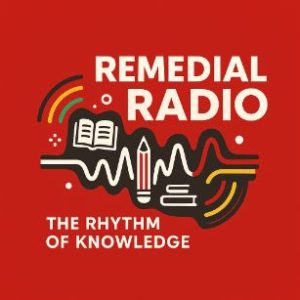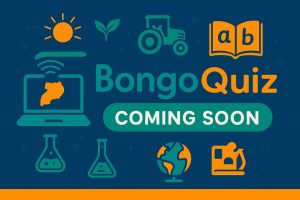Explore how to use a compass (dira) in Kiswahili for Senior One learners. Learn its parts, understand directions in the community, and practice giving directions using real-life examples and illustrations.
Introduction: Why Learn About the Compass (Dira)?
The compass, called dira in Kiswahili, is an important tool for navigation. It helps us understand where we are and how to reach different places. Whether you’re finding a hospital, a school, or giving directions to someone visiting your community, knowing how to use a compass will help you describe locations accurately using Kiswahili vocabulary.
In this lesson, we will learn:
- What a compass is and its parts (sehemu za dira)
- Kiswahili words for directions
- How to describe key community places using a compass (maelekezo ya sehemu muhimu)
Let’s start by breaking down the compass itself.
1. Dira na Sehemu Zake (The Compass and Its Parts)
A compass is a device that shows direction. It always points north, helping you figure out the other directions. A typical compass has eight main directions.
Key Directions and Kiswahili Terms
| English | Kiswahili |
| North | Kaskazini |
| South | Kusini |
| East | Mashariki |
| West | Magharibi |
| Northeast | Kaskazini-Mashariki |
| Northwest | Kaskazini-Magharibi |
| Southeast | Kusini-Mashariki |
| Southwest | Kusini-Magharibi |
Parts of the Compass (Sehemu za Dira)
- Sindano ya dira – The needle of the compass (always points north).
- Kisanduku cha dira – The compass casing/body.
- Mwelekeo – Direction indicators (N, E, S, W).
- Kioo – Glass cover to protect the needle.
Explanation of the campus Top: Kaskazini (N)
- Right: Mashariki (E)
- Bottom: Kusini (S)
- Left: Magharibi (W)
2. Maelekezo ya Sehemu Muhimu kwa Kutumia Dira (Giving Directions to Important Places Using a Compass)
Once you understand compass directions, you can now start giving directions in Kiswahili using simple and real examples.
Common Kiswahili Verbs and Phrases for Giving Directions
| English | Kiswahili |
| Turn left | Geuka kushoto |
| Turn right | Geuka kulia |
| Go straight | Nenda moja kwa moja |
| It is located in the north | Iko upande wa kaskazini |
| Near | Karibu |
| Opposite | Kinyume na / Mbele ya |
| Behind | Nyuma ya |
| In front of | Mbele ya |
Examples of Directional Sentences
- The school is north of the market.
→ Shule liko kaskazini mwa soko. - The mosque is to the east of the church.
→ Msikiti uko mashariki mwa kanisa. - Go straight, then turn left at the hospital.
→ Nenda moja kwa moja, halafu geuka kushoto kwenye hospitali. - The police station is in the southwest.
→ Kituo cha polisi kiko kusini-magharibi.
3. Practical Examples with Places in the Community
Example 1: Describing a Local Map Using Directions
Let’s imagine a community map with these places:
- School (Shule)
- Hospital (Hospitali)
- Market (Soko)
- Police Station (Kituo cha Polisi)
- Mosque (Msikiti)
- Church (Kanisa)
We will describe locations based on a central point (e.g., Soko – Market).
How to Describe It in Kiswahili:
- Shule iko kaskazini mwa soko.
(The school is north of the market.) - Hospitali iko mashariki mwa soko.
(The hospital is east of the market.) - Kituo cha polisi kiko magharibi mwa soko.
(The police station is west of the market.) - Kanisa lipo kusini mwa soko.
(The church is south of the market.) - Msikiti uko kaskazini-mashariki mwa soko.
(The mosque is northeast of the market.)
4. Activities to Practice with Other Students
Activity 1: Directional Dialogue Practice
In pairs, describe where things are in Kiswahili:
Example:
- A: Kanisa liko upande gani wa soko?
- B: Kanisa liko kusini mwa soko.
Activity 2: Labeling a Community Map
Get a blank map with arrows showing directions. label the positions in Kiswahili and write two sentences describing the location of each place.
Tips for Mastering Compass Directions in Kiswahili
- Memorize the 8 key directions: Kaskazini, Kusini, Mashariki, Magharibi, etc.
- Use real community references to relate directions.
- Practice speaking and writing: Describe your school, home, or village using dira.
- Draw simple maps with arrows and label them in Kiswahili.
Conclusion: Use Dira to Describe the World in Kiswahili
Understanding dira and how to give directions (maelekezo) is a powerful skill. It helps you describe the world around you in Kiswahili—especially your local community. With practice, you’ll be able to guide others clearly and confidently using directional words.
As a Senior One Kiswahili learner or beginner, your goal is not just to pass exams, but also to communicate effectively. Start by using Kiswahili to describe where your home, school, or market is.
Kumbuka:
Dira huongoza safari – A compass guides the journey.


Leave a Reply